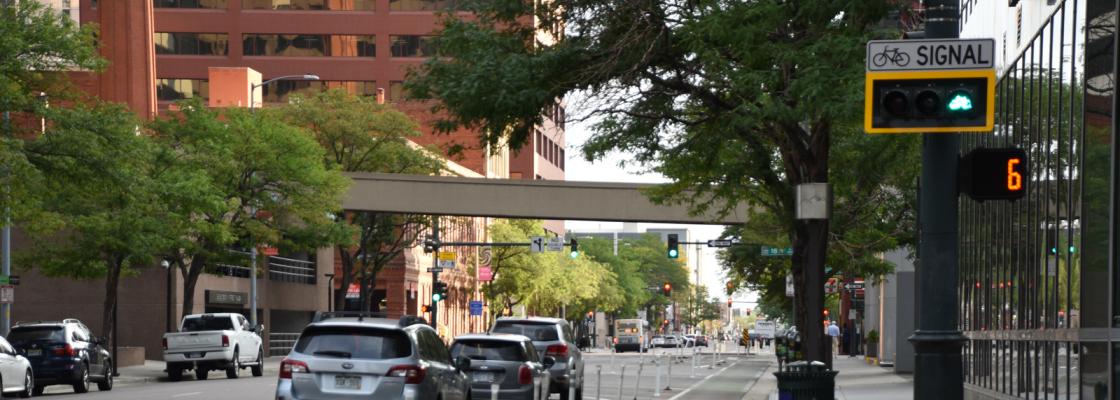
DRCOG has worked for more than three decades to reduce traffic congestion, enhance the efficiency of the transportation system and improve air quality through a traffic operations program.
The Regional Transportation Operations and Technology program deploys technology, tools and coordinated system procedures to assist public agency staff with the day-to-day management and operation of the multimodal transportation system. Coordination among state, regional and local agencies is a key focus of the program. Additionally, program staff lead strategic planning efforts, allocate funds to projects and provide support services to facilitate coordination between jurisdictions and travel modes. A summary of staff activity follows.
Transportation Operations Support Services
DRCOG leads multijurisdictional partnerships to achieve optimal traffic signal timing and coordination on area roadways. Traffic signal timing adjustments reduce back-up delays and provide smoother flow for cars, trucks and buses while enhancing safety for all users, including pedestrians and bicyclists.
Drivers and businesses save fuel, time and money. Pollutants emitted by vehicles are also reduced. Signal Timing Briefs map illustrates an overview of the program's achievements.
Regional Transportation Operations and Technology Strategic Plan
DRCOG adopted a strategic plan describing a vision for transportation systems across the region that are interconnected and collaboratively operated safely and reliably for all users.
The goals for operation of the transportation system are to provide:
- Safe operations.
- Efficient, seamless travel.
- Travel time reliability.
- Equitable access.
- Environmental sustainability.
The focus of priority initiatives are improving situational awareness of transportation incidents or equipment malfunctions, performance monitoring, and multimodal and multijurisdictional coordination.
Regional intelligent transportation systems architecture
Intelligent transportation systems are defined as “electronics, communications, or information processing used singly or in combination to improve the efficiency or safety of a surface transportation system.”
Federal regulations (23 Code of Federal Regulations Part 940) require:
- Development of a regional intelligent transportation system architecture to guide transportation technology project development, deployment and operation. DRCOG regional intelligent transportation systems architecture follows the current national framework.
- Delivery of transportation technology projects must follow a systems engineering analysis approach. The Colorado Department of Transportation provides specific guidance for systems engineering analysis used in Colorado.
Regional Transportation Operations and Technology set-aside
The Regional Transportation Operations and Technology set-aside provides funds for technology, tools and coordinated system procedures. Project examples include:
- Advanced traffic signal equipment and systems.
- Robust communication systems interconnecting field equipment and transportation management centers.
- Traffic cameras; vehicle, pedestrian and bicycle detectors; and other data collection equipment.
- Data management and analytics systems used for traveler information.
- Transit priority applications.
Funds are distributed through a call-for-projects process administered periodically by DRCOG staff. The full details for the call for projects process are described in the Policies for Fiscal Years 2024-2027 Transportation Improvement Program Set-Aside Programs.
